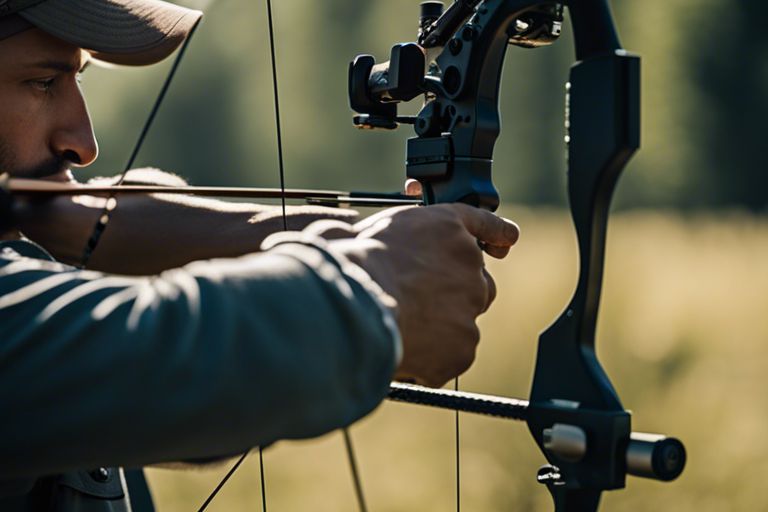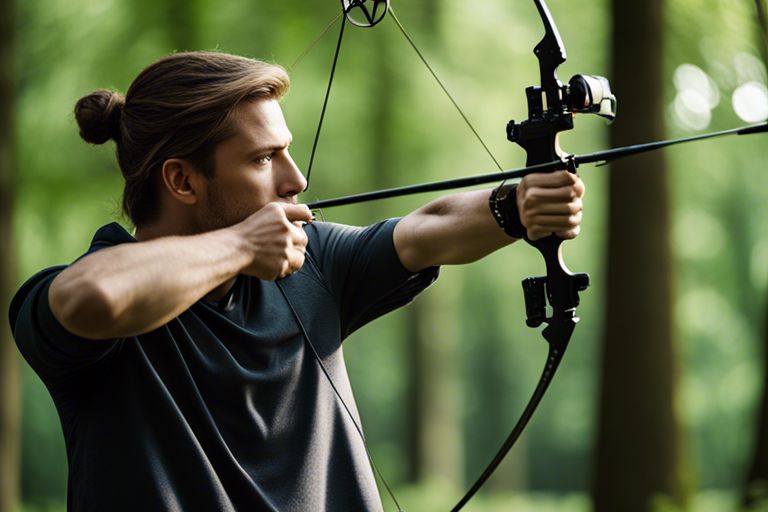Many aspiring archers are drawn to the precision and power of shooting a compound bow. Mastering this skill requires proper technique, focus, and practice. In this comprehensive guide, we will take you through the step-by-step process of how to properly shoot a compound bow. From setting up your bow to finding your anchor point and releasing the arrow, we’ll cover all the important elements you need to know to improve your accuracy and consistency. So, grab your bow and let’s get started on your journey to becoming a skilled compound bow shooter.
Contents
- Understanding Your Compound Bow
- Anatomy of a Compound Bow
- Types and Varieties of Compound Bows
- Pre-Shooting Essentials
- Setting Up Your Bow
- Choosing the Right Arrows
- Shooting Techniques
- Stance and Posture
- Nocking, Drawing, and Aiming
- Release and Follow-Through
- Advanced Shooting Tips
- Maintenance and Care for Your Compound Bow
- To wrap up
Understanding Your Compound Bow
Anatomy of a Compound Bow
One of the most crucial aspects of mastering your compound bow is understanding its anatomy. Compound bows consist of several key components including the riser, limbs, cams, string, cables, and arrow rest. Familiarize yourself with each part and how they work together to propel the arrow with accuracy and speed.
Types and Varieties of Compound Bows
Types and varieties of compound bows vary based on their design, draw weight, draw length, and let-off. Common types include the single cam, dual cam, hybrid cam, and binary cam bows. Knowing the differences between each type will help you choose the best one for your shooting style and skill level. This information is crucial in making an informed decision before purchasing a compound bow.
| Type | Description |
| Single Cam | Uses a single cam at the bottom of the bow |
| Dual Cam | Has two cams at the top and bottom of the bow |
| Hybrid Cam | Combines features of single and dual cams |
| Binary Cam | Utilizes a binary system for synchronized cams |
| Fully Loaded | Comes with all necessary accessories included |
Your compound bow’s type directly impacts its performance, accuracy, and ease of use. Choose a type that best suits your archery goals and preferences for a more enjoyable shooting experience.

Pre-Shooting Essentials
Setting Up Your Bow
Even before gripping your compound bow, it is crucial to ensure that it is properly set up to fit you. Proper setup involves adjusting the draw weight, draw length, and sights to match your physique and shooting style. This step is crucial for comfort, accuracy, and ultimately, safety when shooting.
Choosing the Right Arrows
You should carefully select the right arrows for your compound bow to maximize performance and safety. Length, weight, and material are important factors to consider when choosing arrows. Using the wrong type of arrows can lead to inefficient shots, damage to your bow, and even injury to yourself or others.
For instance, choosing arrows that are too short or too long can disrupt the flight path and accuracy of your shots. It is recommended to consult with a professional at an archery shop to determine the appropriate arrow length based on your draw length and bow specifications.

Shooting Techniques
Unlike the traditional recurve bow, shooting a compound bow requires a different set of techniques. If you are new to compound bows, it is vital to learn the proper shooting techniques to improve your accuracy and overall archery experience. For a detailed guide on how to shoot a compound bow, refer to Archery 101: How To Shoot A Compound Bow.
Stance and Posture
Even the slightest variation in your stance and posture can greatly impact your shot. To maintain proper posture, stand perpendicular to the target with your feet shoulder-width apart. Keep your back straight, shoulders relaxed, and grip the bow with a relaxed hand to avoid torque.
Nocking, Drawing, and Aiming
One of the crucial aspects of shooting a compound bow is the nocking, drawing, and aiming process. Ensure that the arrow is properly nocked on the string, draw the string back to the anchor point consistently, and focus on aiming down the sight or peep sight to align your shot accurately.
One important thing to remember is that the anchor point should be consistent every time you draw the string back. This will help in maintaining a reliable and repeatable shooting form, leading to better accuracy.
Release and Follow-Through
Techniques for release and follow-through play a significant role in the outcome of your shot. Nock the arrow properly, maintain a steady hand on the grip, and focus on a smooth release to let the bow do the work. Follow through after releasing the arrow by staying in position and observing the flight of the arrow until it hits the target.
Nock the arrow precisely to avoid any inconsistencies in your shots. Ensure that your release is smooth and consistent to prevent any jerking motions that could affect the arrow’s trajectory. A good follow-through is vital to maintain accuracy and control over your shot.
Advanced Shooting Tips
-
Understanding Factors Affecting Accuracy - Anchoring point: where the release hand contacts the face is critical for consistent accuracy.
- Sight picture: aligning the peep sight, front sight, and target accurately.
- Release execution: smooth release without torque or jerking the string for precise shots.
- Bow tuning: making sure your bow is properly adjusted for optimal performance.
Understanding Factors Affecting Accuracy
To achieve a high level of accuracy when shooting a compound bow, it is crucial to understand the key factors that can affect your shooting. Anchoring point, sight picture, release execution, and bow tuning all play significant roles in determining the accuracy of your shots. Any inconsistency in these factors can lead to missed shots or poor groupings.
-
Maintenance and Care for Your Compound Bow
There’s no denying the importance of proper maintenance and care for your compound bow. Your bow is a precision instrument that requires regular upkeep to ensure optimal performance and safety.
To wrap up
Now you have a detailed guide on how to shoot a compound bow like a pro. By understanding the proper stance, grip, anchor point, aim, release, and follow-through, you can improve your accuracy and precision significantly. Remember to practice consistently, listen to your body, and make necessary adjustments to your form. With patience and dedication, you can master the art of shooting a compound bow and enjoy the thrill of hitting your target with precision every time.

Leave a Reply